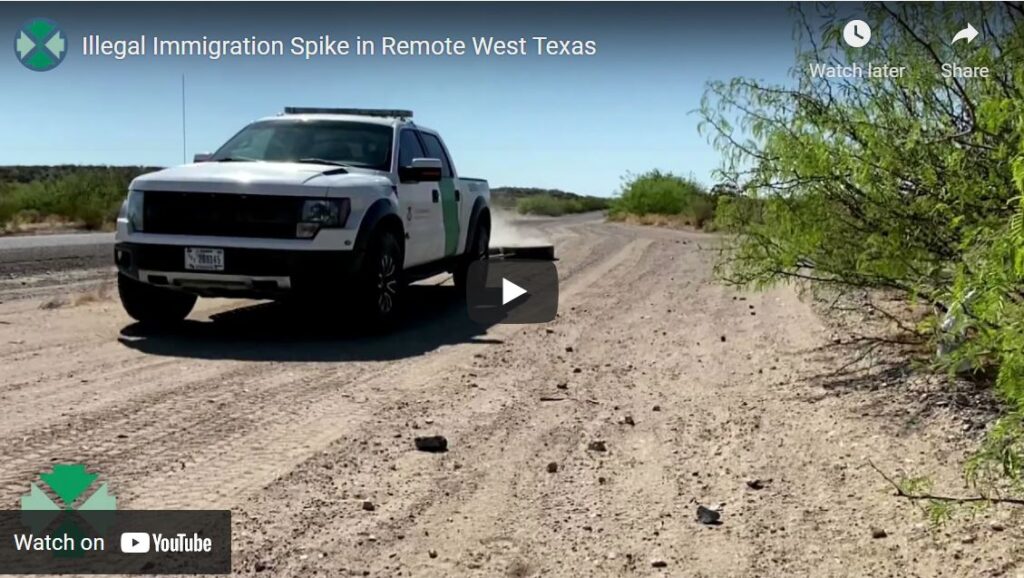‘There’s no one watching’, a smuggler says
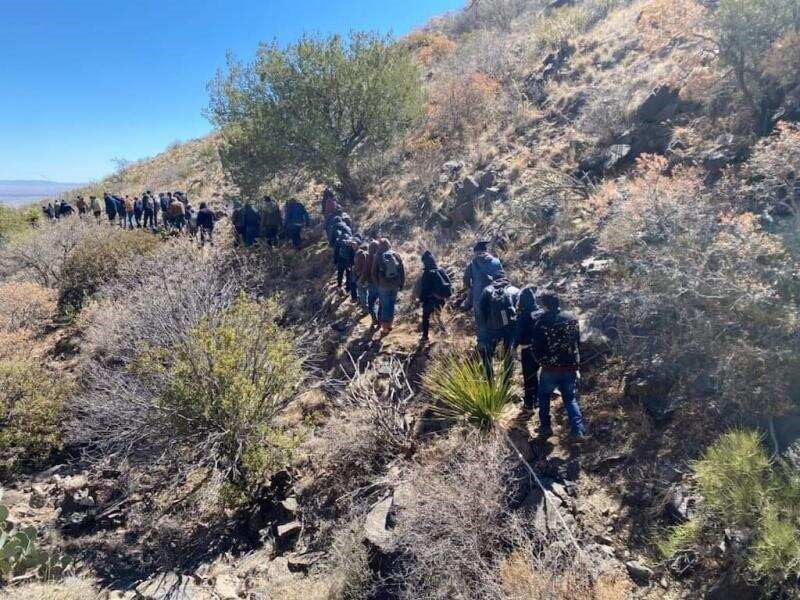
By Todd Bensman as published on April 27, 2021 by the Center for Immigration Studies
OJINAGA, Mexico — Under the international bridge connecting this town to Presidio, Texas, a human smuggling guide snorted cocaine with a buddy and two prostitutes — the chosen rewards for work leading a large group of Central American immigrants on a long backpacking journey to ne
“Jose Antonio”, the name offered to the Center for Immigration Studies, said he was a long-distance foot guide, a guia, for the ultra-violent La Linea cartel controlling this area. He leads groups of immigrants on eight- to 12-day treks through the remote desert terrain in West Texas with a singular goal: get them to U.S. Interstate 10, where associates pick them up at landmarks and drive them into the nation’s interior.
By cell phone, Antonio ordered the chunk of plastic-wrapped cocaine and paid the delivery man from a fist-sized wad of 200- and 500-peso bills pulled from the front pocket of his jeans. He chopped up the small white block with a knife on the tailgate of his beat-up old Chevy pickup truck — a brand new truck was on order with all his new money, he said.
Over the course of an hour or so, Antonio explained the business, attributing his windfall to what he termed la invitación, the invitation. This is the local cartel reference to presidential candidate Joe Biden’s promises to the world’s poor that if they crossed the border illegally when he became president they would be welcome to stay, never fear deportation, and maybe get citizenship. Antonio said that when Biden actually won, business in Mexico’s Chihuahua State instantly boomed ¡como nunca! Like never before.
“They come in from all over Central America, Haiti, Africa, Indonesia, and from all over South America,” Antonio explained between snorts from a flattened 16-penny nail, smiling at his new good fortune. “They just keep coming and keep coming and keep coming.”
For the first time in local memories, rising streams of large groups — 50-to-100 illegal immigrants each — are constantly flowing through the normally quiet Big Bend Sector, one of the biggest, most remote, and perhaps out-of-mind of the eight designated CBP operating areas along the southern border. With 165,154 square miles and 571 miles of Rio Grande border in West Texas, Big Bend also is historically the least trammeled by illegal immigrants, perhaps because of its deterring harshness.
Not anymore, though.
Eighteen-wheeler tractor-trailer rigs and trucks of all sizes now pull right up to the river in unending succession to unload people and drug cargo in broad daylight along the long empty stretches of riverside territory. Police chases of immigrant transport vehicles are now commonplace in towns further inland for the first time. And Border Patrol agents, largely unreinforced despite new circumstances, are chasing groups through the desert day and night, losing most and strained beyond capacity to impact what’s happening, they say.
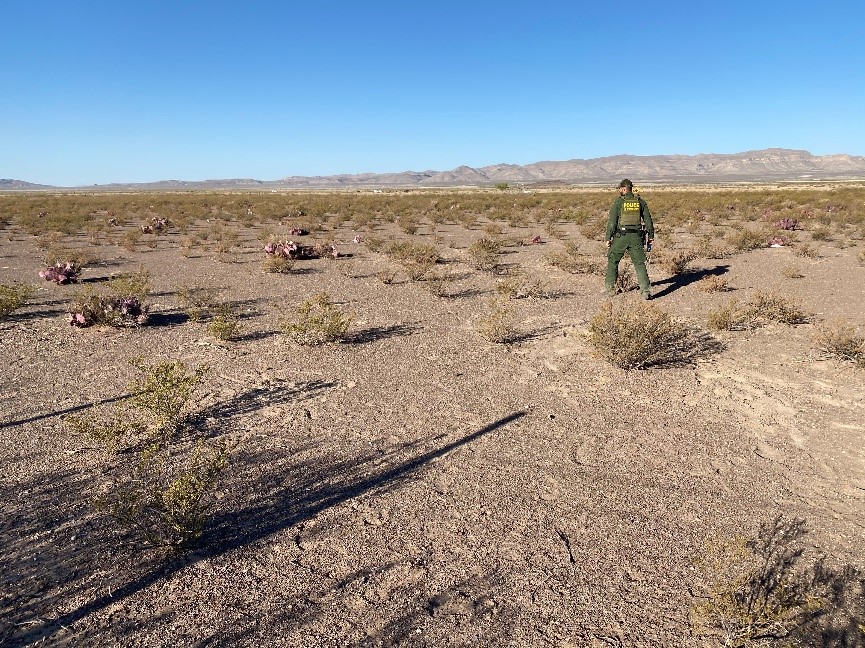
“It’s never been this busy,” one agent who has worked in the Van Horn Station Area for more than a decade told CIS. “I’ve never seen 18-wheelers out on the levy on the Mexican side like this, filled with God-only-knows what. It was predicted before the new administration came in, and it happened. Now the cartels are having a field day.”
In one recent notable incident, five vehicles blasted in from the Mexican side not far south of Sierra Blanca, filled with marijuana, meth — and 87 immigrants. Border Patrol caught that convoy.
But much more often, Border Patrol only ever learns about these events from tracks that churn the dirt, video recordings from hidden cameras, and distant dust plumes. Inland, sheriff’s deputies and Texas DPS Highway Patrol routinely engage in high-speed vehicle chases of smuggler vehicles that pick up migrants off the interstate and state roads leading to it.
More often than not, the passengers and drivers bail out and run into the desert, never to be seen again. The most recent of three crazy smuggler vehicle chases through Marfa and Fort Davis, where Presidio County Sheriff Danny Dominguez was in the lead vehicle, ended in the backyard of Dominguez’s own house. The driver ran and got away.
The Runners: Who, How Many, and Why Here for the First Time?
The illegal immigration surge through this lightly populated, rugged wilderness sector is entirely new and different from what most American media reports show is happening in other sections of the border. The vast majority of illegal immigrants now coming over the shallow Rio Grande border here are single adults, rather than the families and unaccompanied minors flooding other zones and attracting media attention hundreds of miles to the south.
The many reasons for this are not initially obvious.
To understand, it helps to know that families and unaccompanied minors now attracting some national attention are ushered in by the tens of thousands under Biden administration policies some call “catch-and-bus”. After turning themselves in to the first agents they can find, the vast majority of these immigrants are quickly processed, given temporary legal status, and released to board buses heading to cities throughout the nation — rich rewards that attract ever more immigrant families in a self-perpetuating cycle of illegal border crossings. The families and unaccompanied teenagers come to those crossing areas in South Texas because the trek to get there from Central America is shorter, cheaper, and easier on parents hauling small children than going all the way to West Texas.
But the singles are coming to Big Bend because catch-and-bus does not apply to most of them. When they get caught among the families and teens, Border Patrol instantly expels most to Mexico under the Trump-era pandemic-containment policy colloquially known as “Title 42”, which Biden has so far kept in place. Some singles in other sectors (known as “runners” because they do not want to be caught and expelled) try over and over before either going home, weary of the repetitive instant expulsions, or shopping for easier sectors where they can get through.
Now, however, the smugglers and many other single runners, shopping border sectors for paths of least resistance, have discovered Big Bend and its high probabilities for successful illegal entry and evasion.
Sector apprehension statistics show a massive spike there, almost all of it in the category of single adult runners.
For example, U.S. Customs and Border Protection statistics show that just 3,029 single adults were apprehended in the first quarter through March 2020. For the same period this year, the number spiked to 14,091, a 365 percent increase. A smattering of family unit and unaccompanied minor apprehensions brought the sector total for just that one quarter to 15,389.
For historical perspective as to just how significant that number is, consider that total apprehensions of all immigrant categories in the sector for full past fiscal years amounted to: 4,096 in 2014, 5,031 in 2015, 6,366 in 2016, and 6,002 in 2017. So more than 15,000 in a single quarter for Big Bend means that the nation’s historic border surge has arrived here with a vengeance.
The real total numbers are likely much, much higher than the official tally of 15,389. The Border Patrol agents who work here estimate that 70-80 percent get away clean, probably even more. That means tens of thousands more could probably be added to the official tally, assuming a 70-percent no-catch rate.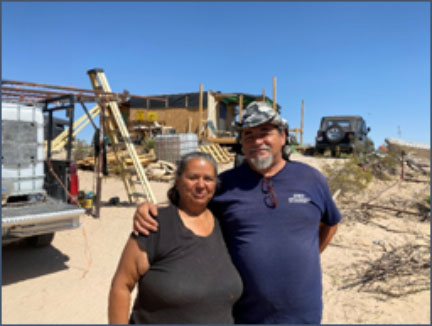
Miguel and Alma Soto, homesteaders near the Rio Grande. Photo by Todd Bensman.
People who live here don’t need numbers to know what’s going on.
Homesteaders Miguel and Alma Soto, who are building a wooden house on 75 acres of desert a mile from the river, said they see immigrant groups every week moving constantly by them on some invisible route on the other side of a flimsy barbed-wire fence from their property. It wasn’t like that when they first bought, and now they feel pretty insecure.
“There’s no border. There’s no wall,” Miguel said. “They’ll come across, you know, but the problem to us is that some could be armed.”
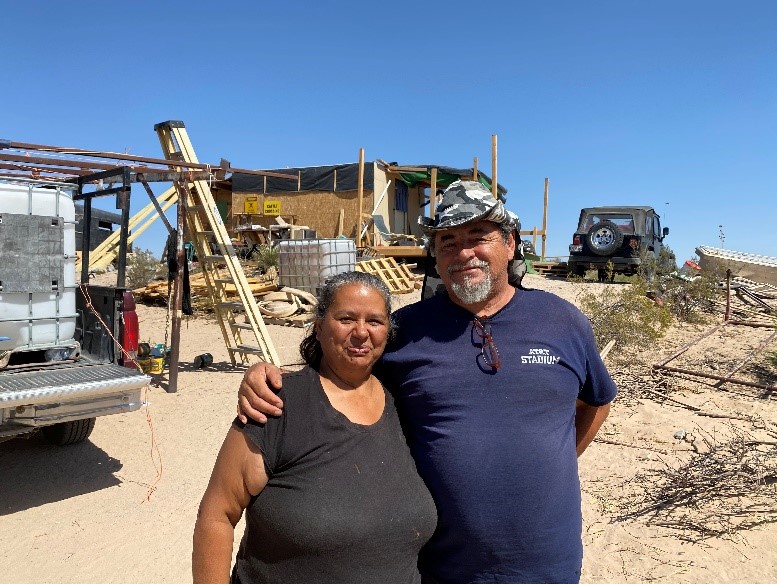
Ray Whetstone, owner of the Neely Ranch which backs up to a stand-alone wall segment, said the segment quieted things down for years. Now, large groups are coming through his property, crossing before the wall starts and moving horizontally across the southern part of his ranch. He said he’s been sleeping with a gun at the pillow now for the first time in his life, “ever since the new president.”
“Since the election, there’s lots of traffic coming through,” Whetstone said. “There’s just more, a lot more.”
For single adult immigrants and their smugglers, the Big Bend Sector offers a range of other attributes that contribute to a higher probability that immigrants will reach the U.S. interior than they’ll have in more infrastructure-rich sectors further south.
A Border Washington has Left Almost Undefended
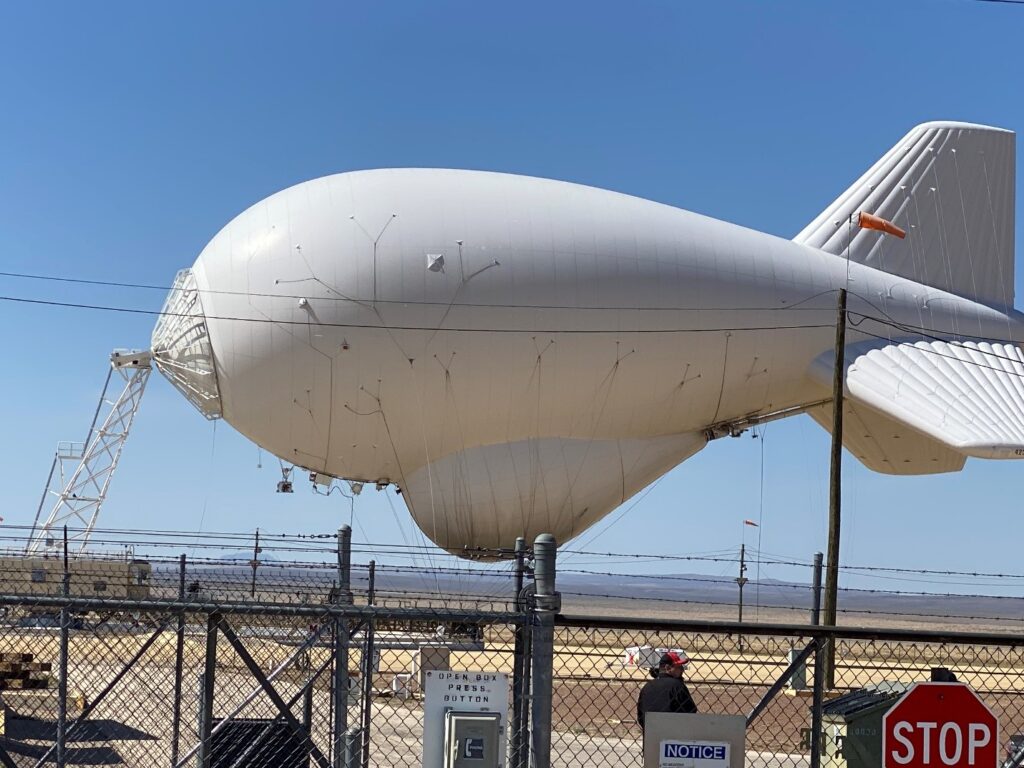
Beyond Biden’s la invitación, Antonio offered why he thought so many were now willing to pay top dollar for long, arduous wilderness slogs that, so short a time ago, were regarded as unattractive.
“There’s no one watching” on the American side, he offered.
Indeed, ranchers, residents, police, and federal agents agree with Antonio that the Big Bend region is among the least patrolled on the border, a forgotten back door left open when it comes to CBP resource allocations. There’s precious little wall anywhere south of Fort Hancock; one 4.5-mile segment built under President George W. Bush stands alone in a surrounding wilderness south of Sierra Blanca doing nothing to stem a tide that simply goes around it.
By all accounts, the single runners are flooding in, over, and around a tiny Border Patrol force that tries but can only do so much with what it was given.
CBP does not publicly release personnel strength data, lest criminals use those numbers to inform their illicit operations. The agents working in the Sierra Blanca and Van Horn stations, however, tell CIS that some shifts field fewer than a half dozen agents for 120 miles of river border, arroyos, canyons, and mountains. Agents in other stations appear to have been lent out to help manage family units in far-away sectors. During a 60-mile round-trip drive along Highway 170, along the river in the Alpine station area, CIS did not see a single Border Patrol agent.
All complain that their ranks are ridiculously small to catch more than a small fraction of those coming through.
“They’re just bum-rushing the border. Probably three-quarters of them are getting away,” one said. “It’s like each station is only allotted a certain number of agents hired and, even if we had the maximum, it’s not enough to stop the groups. They know we’re overwhelmed and the word has gotten out. As long as they send a giant amount of people out, they’ll get through.”
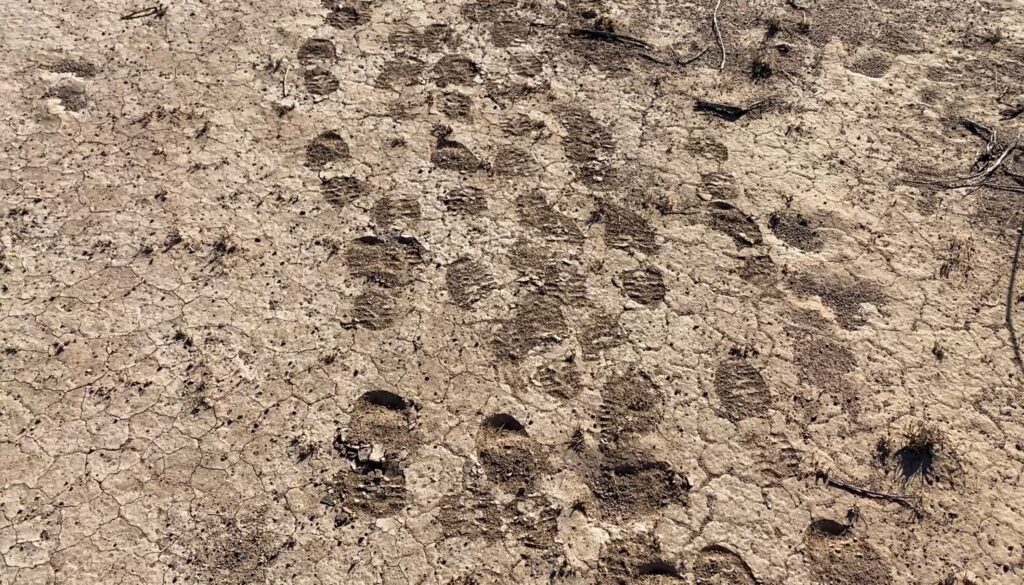

Still, they try.
During a recent visit, for instance, CIS came across an empty Border Patrol vehicle, left open with a window rolled down, about 35 miles south of Van Horn. Tracks suggested the agent must have spooked a large group of immigrants and then pursued them into an otherwise trackless desert. After an hour, the agent still had not returned to his vehicle and the odds that he caught all of them, or any at all, did not seem very promising.
In another circumstance on a different morning in the same area, CIS observed four Border Patrol vehicles maneuvering through the desert in pursuit of what one said was a large group picked up by “surveillance”, probably a drone.
After more than an hour searching the desert on foot and by vehicle, using high-tech vision technology mounted on the back of one truck, the group had to admit defeat and leave the area to do something else.
Little relief is in the offing.
The agency lately has taken to adding D-Day type vehicle barriers to parts of the river to deter the brazen smuggling. CBP did send a Border Patrol Tactical Unit (BORTAC) to the region last month to shore things up.
National Guard soldier in Big Bend on surveillance duty in support of Border Patrol. Photo by Todd Bensman.
CIS met two National Guard troops who were sent to Big Bend Sector to help fill gaps and spot for groups. One said that not many others were sent.
So resources are still stretched thin. When the Biden Department of Homeland Security ordered redeployments of Border Patrol agents from the northern border, and called for volunteers from other federal agencies, they went elsewhere.
CBP spokesman Gregory Davis, in an email exchange, did not answer specific questions about the agency’s response to the sector’s new circumstances, to include any recent response or future plans for it.
Davis wrote that 300 Border Patrol agents from northern and coastal sectors had been shifted to support operations “due to fluctuations along the Southwest Border”, though he did not say where those agents went.
“CBP seeks to deter and disrupt human smuggling activities by transnational criminal organizations to ensure our personnel are properly equipped to maintain border security,” he said.
There’s no sign that Washington headquarters is interested in reinforcing the beleaguered Big Bend outposts. Short of interest or much knowledge about what’s happening there, Big Bend will remain largely defenseless in a migration crisis that has arrived there and shows only signs of sharp escalation.
WATCH VIDEO
